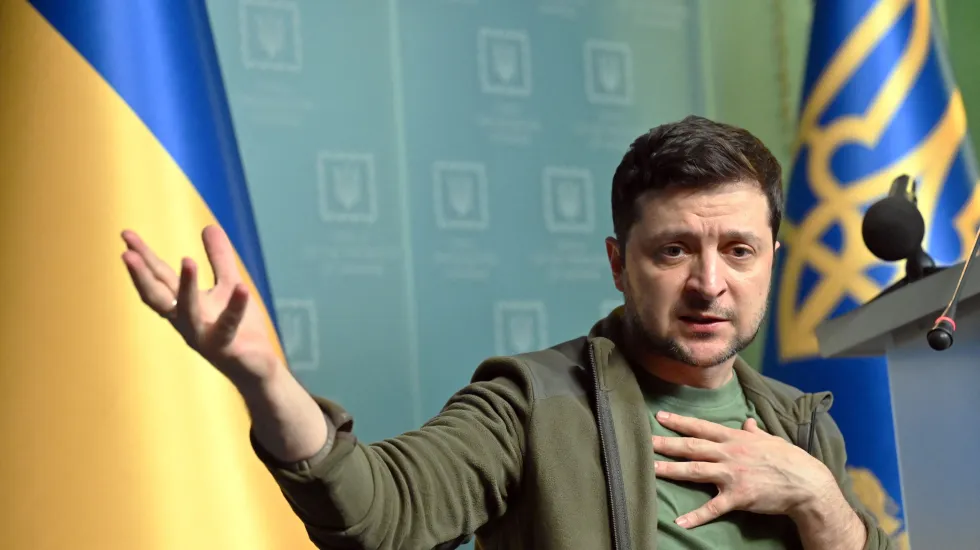
WASHINGTON — Whether the U.S. and our allies should provide fighter jets — and establish no-fly zones — to help Ukraine battle Russian invaders are difficult decisions.
Our hearts say yes, of course.
Our heads say, no — avoid a direct confrontation with Russian President Vladimir Putin and deny him a pretext to trigger an all-out World War III in Europe. Then again, perhaps we are already in the first chapter of a World War III, and we just haven’t realized it as we consider the tough choices we are facing.
Vice President Kamala Harris landed in Warsaw on Wednesday with her mission made more complex after Poland surprised the U.S. with a plan to send Ukraine its fighter jets. The U.S. said the proposal was untenable because it would provoke the nuclear-armed Putin even more.
Meanwhile, Ukrainian President Volodymyr Zelenskyy increased his pleas for a no-fly zone after Russians bombed a maternity and children’s hospital.
Rep. Mike Quigley, D-Ill., is a leading voice in calling for a no-fly zone in Ukraine and sending in fighter jets.
“Look, we’re, we’re bringing in lethal aid, javelins and stingers,” Quigley, told me, referring to missiles. And “Putin sees that as an act of war. We’re sanctioning them and tanking their economy. Putin sees that as an act of war. You know, it’s hard to draw the distinction, say, well... we won’t bring in the planes.”
For NATO members — and Ukraine is not one — an attack on one member country is an attack on all.
Quigley said his point is, “What makes NATO territory more important to us, when it comes to this savagery. Right? It’s hard to distinguish, because clearly, the Ukraine fight, its purpose, the spirit behind what they’re trying to do is why we formed NATO, it is embodied in their efforts.”
In any case, Quigley argues that Ukraine is due more assistance even if the nation is not a NATO member because that was part of the deal with Ukraine when it gave up its nuclear stockpile after the Soviet Union break up.
Quigley’s certainty is informed by his membership on the House Intelligence Committee and as co-chair of the House Ukraine Caucus.
When Rep. Adam Kinzinger, R-Ill., made the call for a no-fly zone on Feb. 25, he was the first member of Congress to do so.
Kinzinger is a member of the House Foreign Affairs Committee and a pilot in the Air National Guard.
“The rationale is saving innocent lives. To recap: Putin said that sanctions, no fly zone, & sending arms each constitute an act of war. Why are we letting this thug dictate our foreign policy? The NATO alliance was made for moments like these. We must send this aid & stop Putin,” Kinzinger said in a tweet.
Rep. Raja Krishnamoorthi, D-Ill., on the Intelligence panel, opposes a no-fly zone but supports a NATO member sending fighter planes to Ukraine.
Rep. Brad Schneider, D-Ill., on the foreign affairs panel, told me he is still evaluating the situation and is concerned that enforcement of a no-fly zone would be seen as dangerous “direct engagement” with Russian forces.
Sen. Tammy Duckworth, D-Ill., on the Senate Armed Service Committee and an Iraq war vet, sees it that way too.
Said Duckworth, Biden “said he will not send our troops to confront the Russian military, and I agree with that—and it’s a lot easier to talk about a no-fly zone than enforce one. A no-fly zone would have to be enforced with our military aircraft and would increase the risk of direct combat between our troops and Russian troops.”







